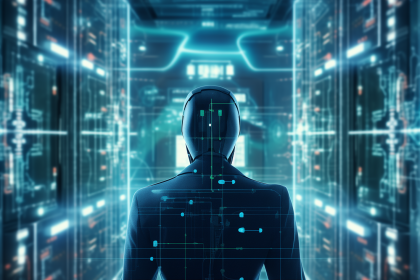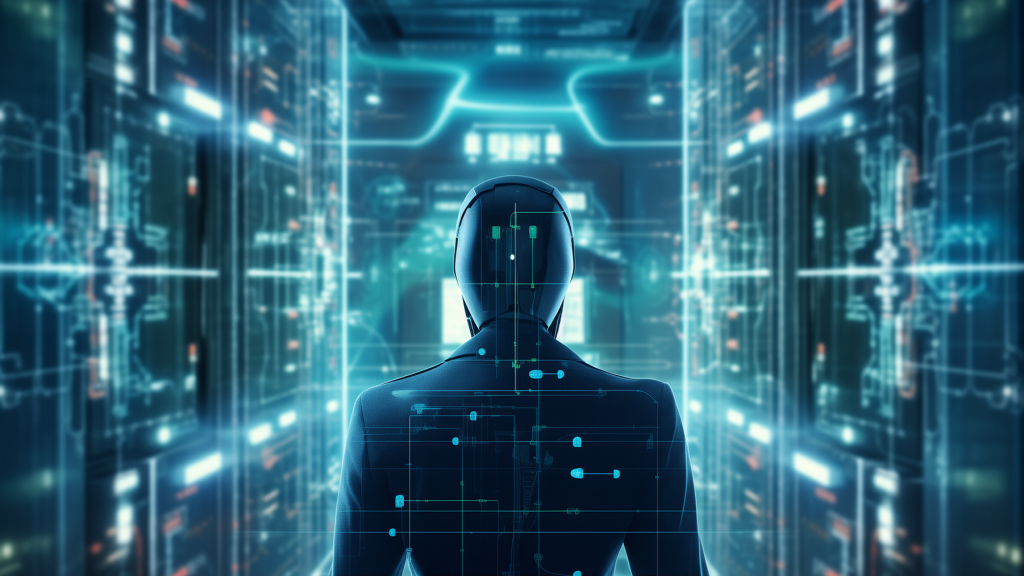

Nowadays, data is more valuable than ever, and thus the importance of robust cybersecurity cannot be overstated. As the digital landscape continues to evolve, so do the threats that businesses and individuals face. The traditional methods of securing our data and systems are no longer sufficient. To address this ever-changing landscape, we must turn to innovative solutions, and one of the most promising approaches is AI-driven security.
The cybersecurity threat landscape has become increasingly sophisticated. Hackers employ a wide range of tactics, from ransomware attacks to social engineering schemes, making it essential to adopt advanced security measures. AI-driven security, empowered by machine learning and deep learning algorithms, is at the forefront of this battle.
AI-driven security is not science fiction. It’s a practical and powerful approach to defending against cyber threats. At its core, AI-driven security harnesses the power of artificial intelligence to analyze vast amounts of data, detect anomalies, and respond to potential security breaches in real-time.
AI-Driven Security in Action
The effectiveness of AI-driven security lies in its ability to process enormous datasets rapidly. This technology continuously monitors network traffic, user behavior, and system activity to identify patterns and anomalies. It can automatically detect suspicious activities, such as unauthorized access or unusual data transfers, long before a human analyst might notice.
AI-driven security can identify not only known threats but also previously unseen, zero-day threats. By analyzing historical data and understanding normal behavior patterns, it can spot deviations that may indicate an impending attack. This early detection is crucial for preventing breaches and minimizing damage.
The Backbone of AI-Driven Security
The success of AI-driven security depends on data. The more data AI has access to, the better it becomes at recognizing threats. Data-driven security, in this context, involves collecting and analyzing vast amounts of historical and real-time data to train AI models.
Data-driven security is not limited to a single data source. It involves aggregating information from network logs, server logs, endpoint devices, and even external threat intelligence feeds. This comprehensive data is used to create a baseline of normal activity and detect deviations that might indicate a security incident.
Security Events Monitoring: Real-Time Surveillance
AI-driven security systems are constantly monitoring for security events. Any deviation from normal patterns triggers an alert. For example, if an employee who typically logs in from one location suddenly attempts to access sensitive data from another continent, the system will flag this as an anomaly and issue an alert.
This real-time surveillance is a game-changer for incident response. Security teams can react swiftly to potential threats, reducing the time it takes to investigate and mitigate risks. By automating this monitoring, AI-driven security helps organizations stay one step ahead of malicious actors.
Threat Intelligence
AI-driven security doesn’t just react to known threats; it also helps organizations stay ahead of emerging threats. By analyzing threat intelligence from various sources, including global cybersecurity databases and in-house logs, AI systems can proactively identify vulnerabilities and predict potential attack vectors.
Threat intelligence is more than just information; it’s actionable insights. AI can analyze trends in the threat landscape and assess an organization’s specific vulnerabilities, enabling proactive measures to patch security holes, update configurations, and fortify defenses. This predictive capability is a critical component of modern cybersecurity.
Forensics and Investigation
When a security incident occurs, AI-driven systems play a crucial role in incident response and investigation. They can quickly assess the extent of a breach, identify the attacker’s tactics, techniques, and procedures (TTPs), and assist in recovery efforts. This can save organizations precious time and resources during recovery.
AI-driven forensics is about more than just identifying what went wrong. It also helps organizations understand how the breach occurred and how to prevent similar incidents in the future. It streamlines the investigation process and can even provide valuable information for legal proceedings or law enforcement collaboration.
Ultimate Cybersecurity Solutions
The ultimate goal of AI-driven security is to provide a level of protection that surpasses human capabilities. While human experts are invaluable, AI can process data at a speed and scale that no human could match. It never tires, it never overlooks details, and it’s always on guard. Moreover, AI systems can learn and adapt, becoming even more effective over time.
The ultimate cybersecurity solutions provided by AI-driven security go beyond automation. They include the ability to self-learn, detect never-before-seen threats, and evolve in real-time. AI augments human expertise by taking over routine tasks and offering recommendations based on its continuous analysis of the security landscape. This combination of human intelligence and AI capabilities is the future of cybersecurity.
AI-driven security represents a new frontier in cybersecurity. It’s a force multiplier that enables organizations to enhance their defenses and protect their digital assets effectively. The threat landscape may evolve, but with AI-driven security, we have a formidable ally that evolves with it. As we move forward in this digital age, embracing the power of AI-driven security is not an option; it’s a necessity.


You must be logged in to post a comment.